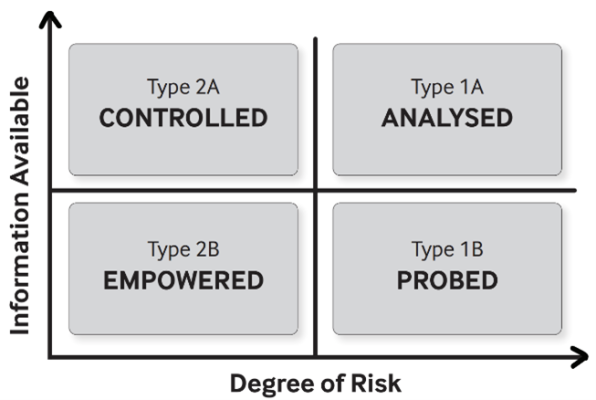Some leaders believe their job is to make all the big calls, to be the final say on everything from strategy to operations. It feels like leadership, right? Taking charge, making the tough calls. But here’s the problem—when a leader takes on the role of chief decision maker, they limit their team’s ability to think, act, and own their responsibilities.
Perhaps you have a leader like this, perhaps you are wondering if you might be this type of leader. Irrespective, the way to help a leader (or help yourself) is to categorise decisions. Some require deep analysis and careful thought, while others need to be made quickly and adjusted later if needed. Jeff Bezos calls them Type 1 and Type 2 decisions. Type 1 decisions are the big, strategic moves—irreversible and high-impact, requiring leadership’s full attention. Type 2 decisions are smaller, reversible, and can be delegated without much risk.
In my book Team Think…. I introduced four categories of decisions based on the two of Bezos (see figure).

I hope you can see how you can develop a process for categorisation around a tool like this. To do so ask, including guidance on who is best placed to make a decision. Who owns which types of decisions? How best to define the boundaries between types? When should issues be escalated?
It won’t happen overnight, but within months, your team will be moving faster, and the leader or you will be freed up to think strategically instead of firefighting.
This is the real work of leadership.
C-Suite Leaders: Delegate more Type 2 decisions to your team. Set boundaries, provide clarity, and let them own the outcomes while you focus on the big picture.
Risk Leaders: Simplify decision-making by embedding clear risk criteria into processes. Create tools that clarify when risks should be escalated and when they can be managed independently.
So, what’s one decision this week that you shouldn’t be making?
As always, I’d love to hear your thoughts.

